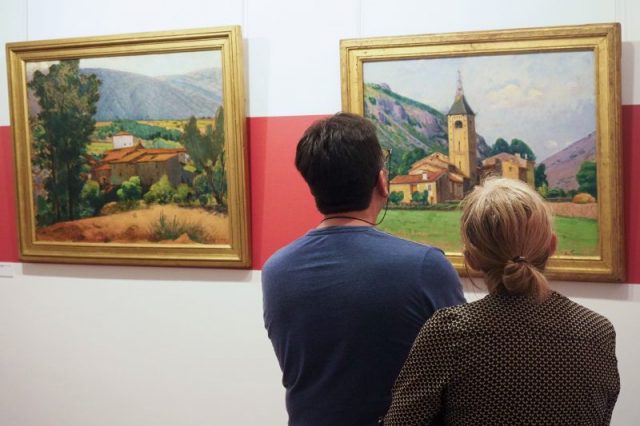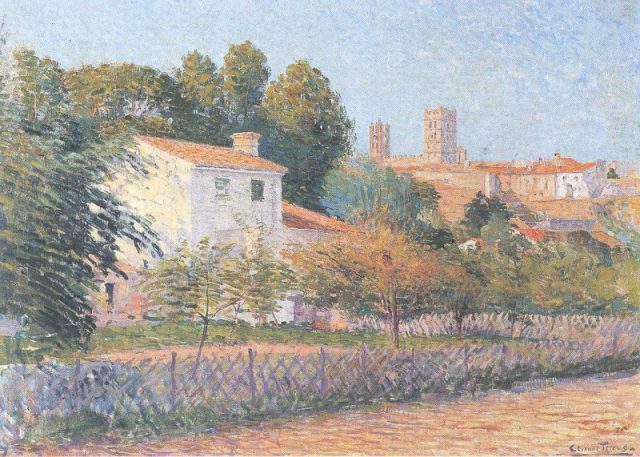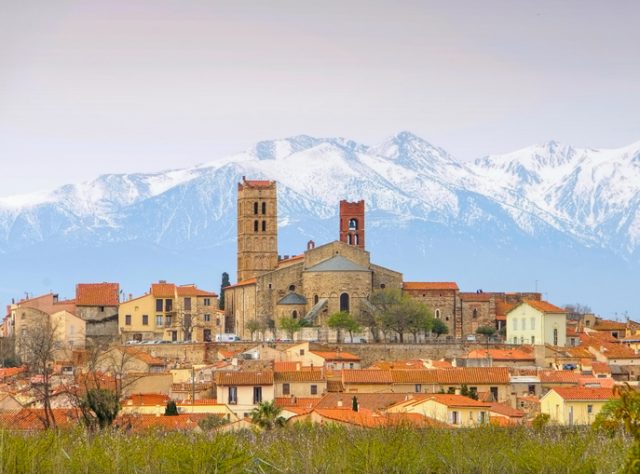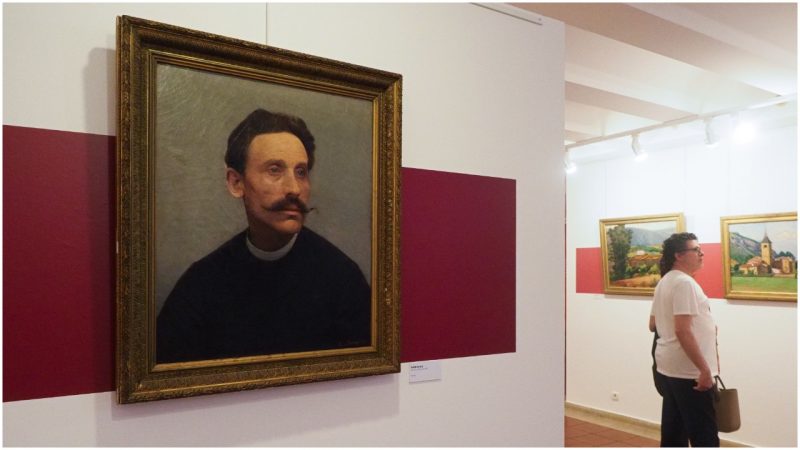When a guest art historian was brought in to the Terrus Museum to work on its collection of paintings by the respected local landscape artist Étienne Terrus, he noticed something odd about the signature in one work. He brushed the signature lightly with his gloved hand and, to his amazement, it fell away to reveal another person’s signature underneath. Terrus was not the artist of the painting.
And this was just the beginning.
Authorities now believe that more than half of the paintings attributed to Terrus are not his work. Over the last two decades, police say, the museum in the town of Elne in southern France has spent more than $190,000 to acquire what turned out to be fake or forged paintings, drawings, and watercolors.
In perhaps the most embarrassing instance, one landscape painting showed a French tower built in the late 1950s. Étienne Terrus died in 1922.
The guest art historian, Eric Forcado, investigated the entire collection. After conferring with a panel of experts, he concluded that 82 of the 140 works in the collection were frauds.

Visitors look at the painting ‘Le clocher de Ria’ (The bell tower of Ria) at the museum dedicated to French painter Etienne Terrus, in Elne (Elna), on April 28, 2018. – Sad inauguration on April 27, 2018 for the museum dedicated to Etienne Terrus, in Elne, in the Pyrenees-Orientales, which saw its collection amputated by 60%, 82 paintings on 140 were counterfeit. (Photo by RAYMOND ROIG / AFP Getty Images)
Terrus, born in 1857, primarily worked in watercolor and oils. CNN reported that he “painted in the Fauvist style, a tradition known for its bright hues and impressionistic leanings that amplify the natural appearance of portraits and landscapes through color and imagination. Terrus studied at the studio of the academic Parisian painter Alexandre Cabanel and was friends with many famous artists of the time, including Henri Matisse and André Derain.”
The museum spent the last two decades collecting his work. Most of the inauthentic works were acquired after 2013. The money used to acquire the false paintings came from fundraising efforts and private benefactors. In March 2018, when the revelations were made, the town council filed a criminal complaint, and the police launched an investigation. No arrests have been made.

A story in the National Geographic says, “To the untrained eye, faked or forged art can be difficult to spot. But correctly attributed works should have provenance documentation, and that documentation should be certified. If that fails, other details like a misspelled, shaky signature or materials from a different period can be telltale signs of a fake or forgery.”
A fake and a forgery are different in the art world. A fake is a painting by someone else of the time and school than the attributed artist, perhaps a student, and altered to appear authentic and boost the value. A forgery is painted with the express intent of imitating a certain artist. It is a growing crisis in the art world.
“The bigger problem with museums is not purchases that tend to come under scrutiny, but the acceptance of works on loan that may be problematic,” says Noah Charney, an author and founder of Association for Research Into Crimes Against Art in a recent interview. “Most museums around the world rely on loan objects and … museums might not question works offered on loan if they look good because they rely on such loans to fill their walls.”

In the case of the Terrus Museum, its increase of acquisitions was part of an effort to support tourism in the area. The museum did not have a trained curator. The town of Elne began investing in the museum showcasing its local artist, renovating its lighting and controlling the building temperature. The art historian who uncovered the extensive presence of fakes was brought in as part of that renovation effort.
“I would imagine that at least 95 percent of everything that is displayed in museums is exactly what the museums think it is, meaning it is not misattributed, and it is neither a fake nor forgery,” Charney says in the interview. “It may be safe to say that some 20 percent of a museum’s entire holdings are problematic in terms of authenticity, which means they were actually inadvertently misattributed, or perhaps, in very rare cases, a proactive fake or forgery.”
In late March, the Terrus Museum exhibited 60 of the artist’s works that have been completely authenticated.
Nancy Bilyeau, the U.S. editor of The Vintage News, has written a trilogy of novels set in the court of Henry VIII: ‘The Crown,’ ‘The Chalice,’ and ‘The Tapestry.’ The books are for sale in the U.S., the U.K., and seven other countries. For more information, go to www.nancybilyeau.com.
